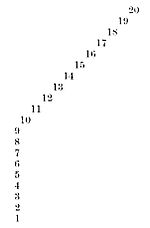to trees or plants which actually sprang from the remains of the dead, and so were regarded, like everything else that came out of the tomb, as embodiments or avatars of the dead man's spirit. Once such sanctity came to be generally recognized, however, it could be readily transferred to other conspicuous or remarkable trees, or even to trees in general, and particularly to the special groves or plantations that surrounded temples, whether mortuary or cenotaphic.
Yet in every case, when we go back far enough in time, or, what comes practically to the same thing, when we go down low enough in culture toward the savage level of primitive man, we find always that we stand nearer face to face with these the earliest naked realities of religion—that the ghost counts for most; that the temple has not progressed beyond the stage of the hut or underground dwelling; that the sacred stone is still the actual tombstone; that the altar is still the actual grave slab; that the sacred tree is still directly and intimately connected with the ghost or the tumulus.
[To be continued.]
| NUMBER FORMS. |
By G. T. W. PATRICK,
PROFESSOR OF PHILOSOPHY IN THE STATE UNIVERSITY OF IOWA.
IN the Atlantic Monthly for February, 1873, Miss H. R. Hudson, writing on idiosyncrasies, says, "The nine digits will ascend in a straight line before my mind's eye, and the larger numbers will slant off at a queer angle" thus:
 |
About twelve years ago Francis Galton, in England, while engaged in an investigation into the visualizing peculiarities of different persons, discovered that the possession of "number forms" was not uncommon. Some of these "forms" were given by him to the public in Nature for January 15, 1880, and afterward a collection of about sixty-five of them was published in his book on Inquiries into Human Faculty. These were accompanied by many descriptive details, but Galton did not attempt any complete explanation of the number form in general.
Neither is it the purpose of this article to attempt such an explanation, but rather to add to Galton's list some thirty-five or
